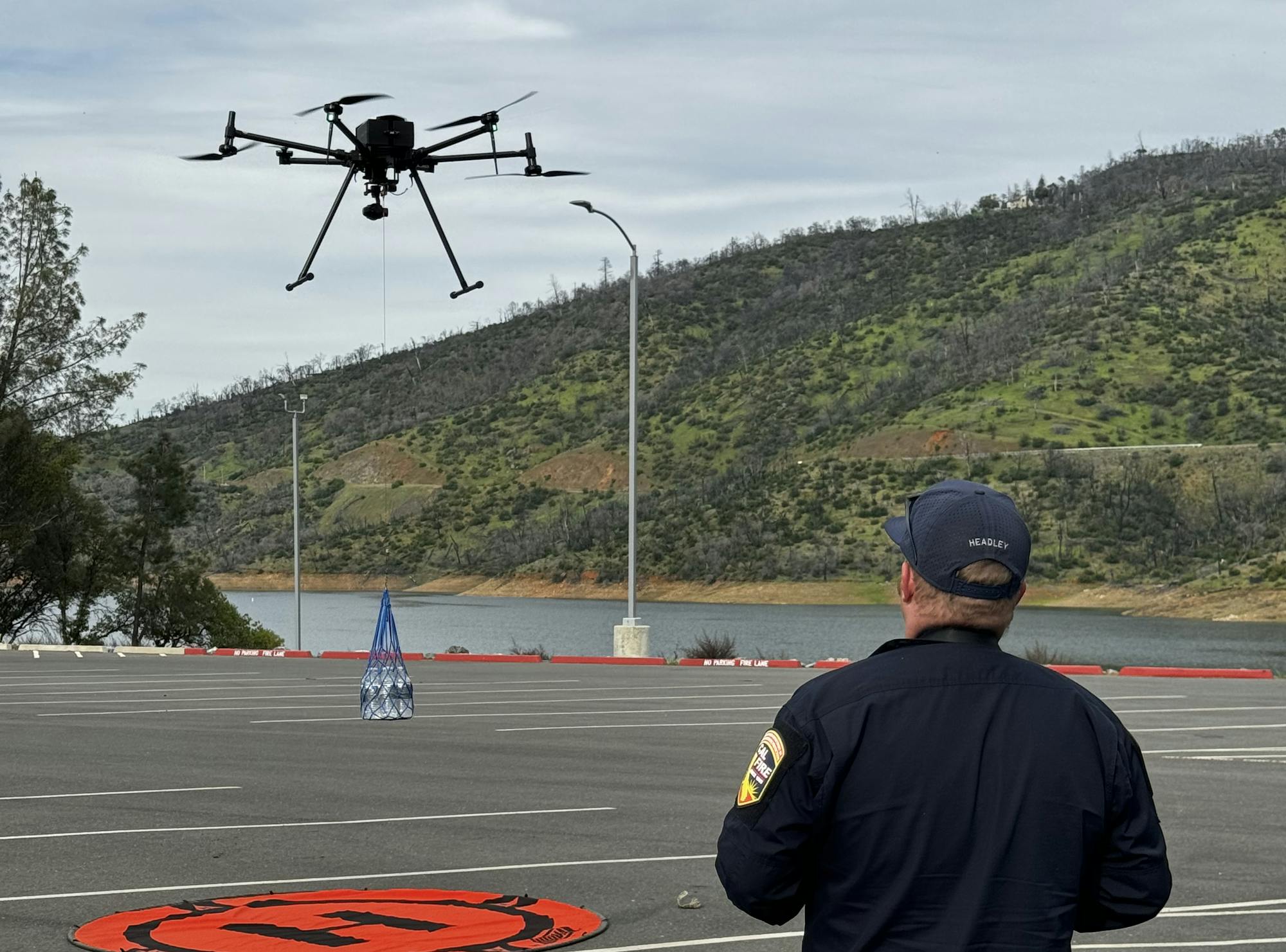Drone Program

The CAL FIRE San Benito-Monterey Unit (BEU) is proud to lead one of the most innovative and effective Unmanned Aerial Systems (UAS) programs in California. What began in 2020 with a single donated aircraft from Joel Gambord to the Pebble Beach Community Services District and one qualified pilot has since grown into one of the most robust drone programs in the state.
Through vision, leadership, and continued investment, the BEU UAS Program now operates seven different airframe models and employs ten highly trained pilots, each qualified to carry out a wide range of missions. While our original purpose focused on providing real-time situational awareness during wildland fires, we quickly recognized the broader potential of this technology in an all-risk environment. Today, our drones support a variety of critical functions, including:
- Infrared hotspot detection to help firefighters find and eliminate smoldering materials.
- Mapping and imaging (including ortho-mosaic and infrared products) to support incident planning and recovery.
- Search and rescue support, using color detection and aerial reconnaissance.
- Cargo delivery, transporting lifesaving equipment such as flotation devices, water, and AED kits.
- Aerial ignition and fuels management, helping reduce hazardous vegetation and improve firefighter safety.

In 2024 alone, BEU UAS pilots flew more than 600 total hours, with missions ranging from wildfire response to training, fuels projects, search and rescue, and large-scale public events. Statewide, the team supported every major incident and dropped more than 22,000 aerial ignition spheres, treating over 10,600 acres.
The BEU UAS Program is not only operational but also forward-looking. Our team actively collaborates with CAL FIRE leadership, national working groups, and partners like NASA to develop policies, curriculum, and technology that will define the future of drone use in public safety. From expanding pilot training to exploring fixed-wing platforms for long-duration mapping, BEU continues to set the standard in innovation.

Equally important is our commitment to the community. We regularly engage with local schools and universities—including Chartwell Academy and the Naval Postgraduate School—to showcase how technology and public safety intersect, inspiring the next generation of innovators. We’ve also shared our expertise at national forums such as the AUVSI Xponential Symposium, demonstrating how drones reduce risks to emergency responders and act as a force multiplier during large-scale incidents.
